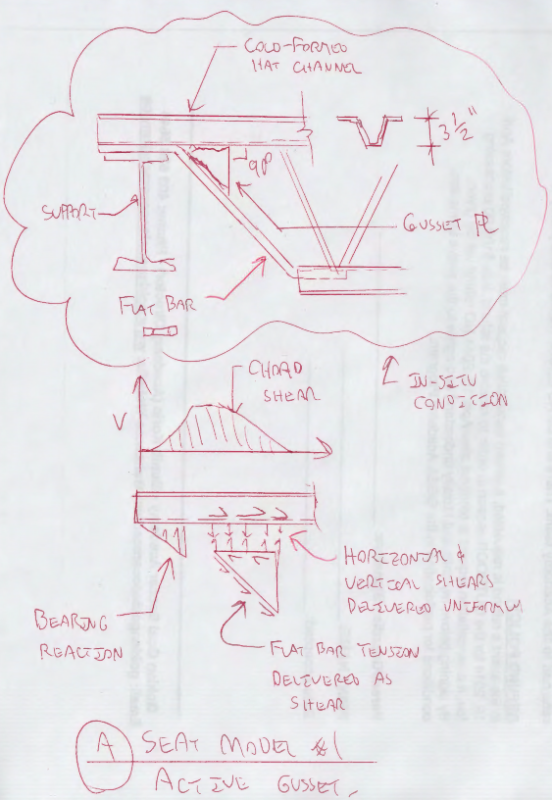How do we calculate joist seat capacity of an existing steel joist?
The seat in question is 2.5 in deep. The joist configuration is top and bottom chord(1.2 in. depth and 3.5 in wide) is a hat section with pipes(crimped ends)as webs. The end diagonal is a flat bar which is welded to a trapezoidal shape gusset welded to both end diagonal and top chord.
Joist shoe is made up an inverted hat section welded to underside of top chord hat section. Looks like two hat sections as mirror image of each other.
The seat in question is 2.5 in deep. The joist configuration is top and bottom chord(1.2 in. depth and 3.5 in wide) is a hat section with pipes(crimped ends)as webs. The end diagonal is a flat bar which is welded to a trapezoidal shape gusset welded to both end diagonal and top chord.
Joist shoe is made up an inverted hat section welded to underside of top chord hat section. Looks like two hat sections as mirror image of each other.

